What do you do when your dog doesn't want to eat?
First and foremost, it's important that your dog have regular vet visits to help rule out any underlying causes for their loss of appetite. Once you have an opinion from your Vet, it's important to take action to help your furry friend.
Here are some tips for when your dog refuses to eat:
Eliminate Stress
Eliminate any potential stress factors during feeding time (other dominant dogs, cats, or children)
Cleanliness - Keep the feeding area clean. Present the food you are offering in a clean feeding bowl and daily rinse the water bowl and refill with fresh water.
Experiment- When a dog appears to have an aversion to a specific food, try experimenting with other foods to find something they find more palatable. Look for recipes that are energy-dense and that are appropriate for the dog's health.
Increase the appeal of the food to your dog with the following special preparation techniques:
- Warm the food slightly so it is at room temperature, but not hot to touch.
- Finely chop or puree the dogs food to minimize chewing
- Add fat or protein to the diet, but take care to match it to the dog’s medical condition (uremic and pancreatic dogs may need to avoid fat).
- Add sweet flavors (sugars or syrups) or salt. This may be done by mixing pumpkin or cooked sweet potatoes into your dog’s food. Be careful with sugars for diabetic pets, and pets with cardiac or renal diseases when adding salt.
- Use fresh quality ingredients.
- Use aromatic ingredients that can help stimulate the dog's desire to eat. i.e. Chicken
- Offer multiple food choices to give the dog different options for food.
- Try feeding your dog by hand, which means picking up a small amount of the food and offering it to your dog to eat from your hand.
- Always give praise to the dog as they eat to mark the good behavior that you want to encourage. When the dog is eating the food use a light sing song tone of voice and tell them they are a good dog.
- Appetite stimulation drugs may be helpful, but are not always recommended. Diazepam, cyproheptadine, and propofol are all used occasionally to stimulate appetite. Monitor your pet for any side effects like vomiting or diarrhea.
- If it was determined by your vet that your dog's refusal to eat is caused by a medical condition it is vital that your dog swallows their oral medications that the vet has prescribed to ensure continuous treatment of underlying causes
How long can a dog go without eating?
It is perfectly normal to self regulate and skip a meal. If your dog doesn't want to eat after 48 hours, consult with your veterinarian as assisted feeding should be done. In extreme cases anorexia that persists for 3-5 days requires a form of nutritional support using nasogastric tubes.

What to feed a picky dog
Transition to New Food

Day1
Mix 25% New Food With 75% Old Food

Day 4
Mix 50% New Food With 50% Old Food
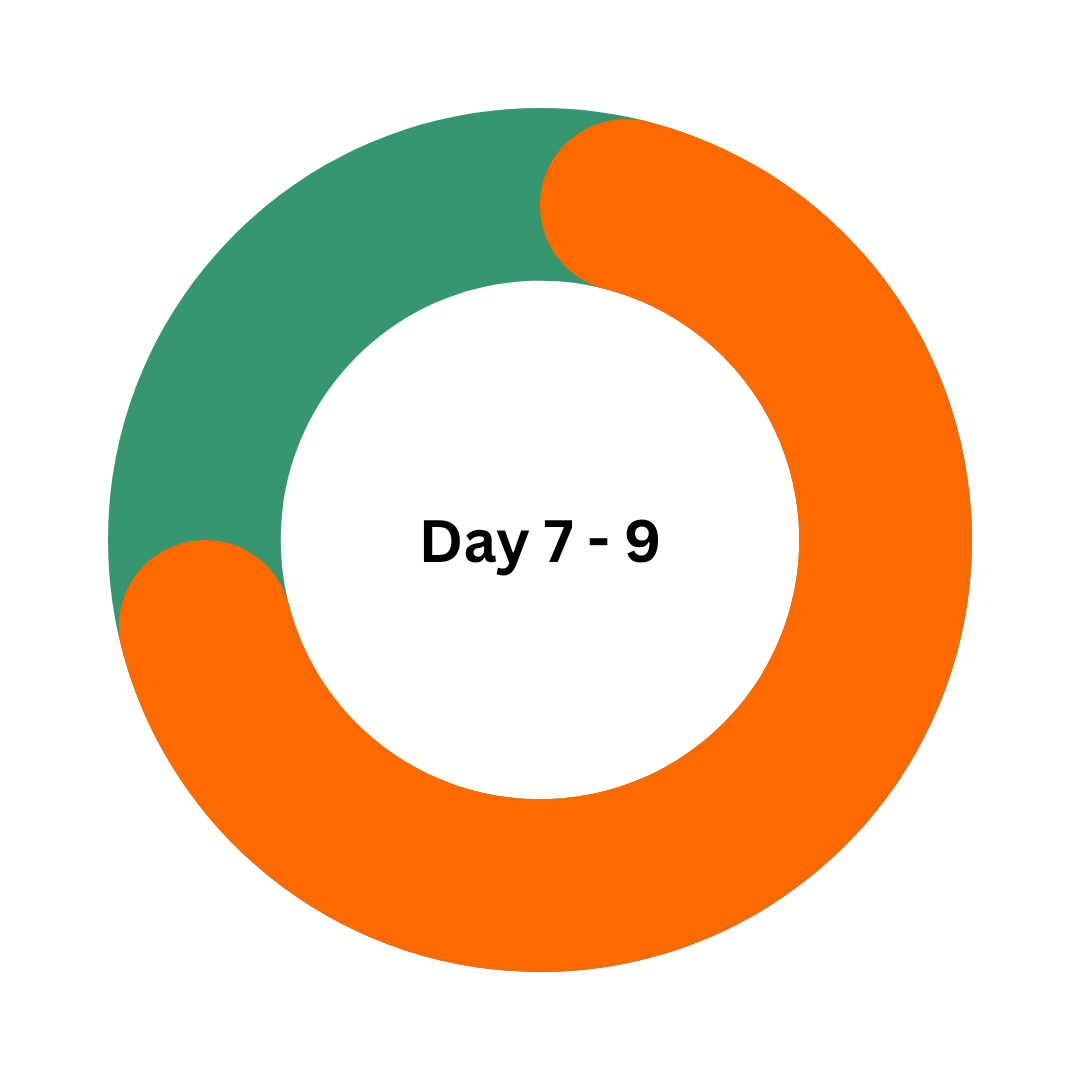
Day 7
Mix 75% New Food With 25% Old Food
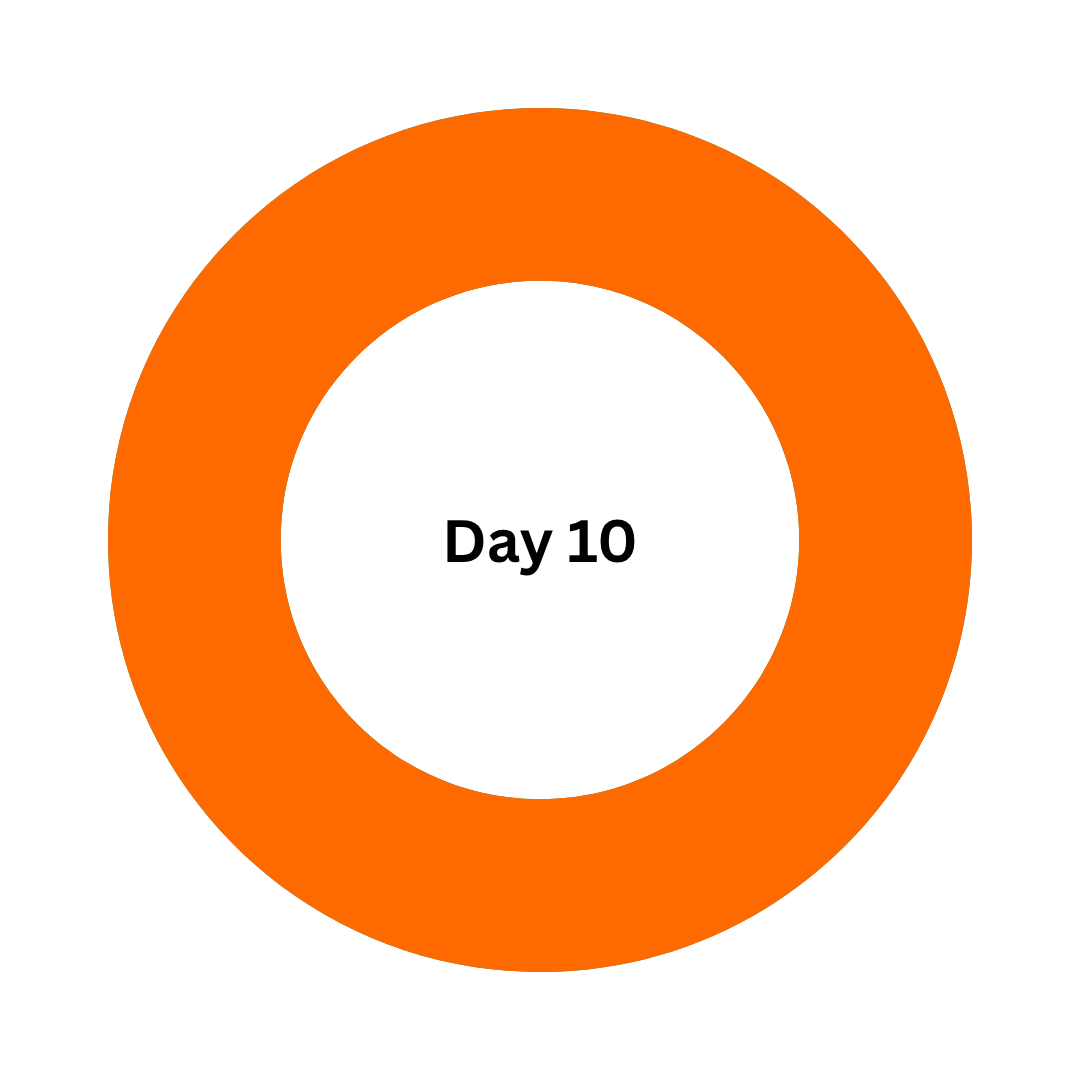
Day 10
100% New Food
What do you feed a dog that doesn't want to eat?
A problem pet parents may face is a refusal to eat a new food when you have changed your dog's diet.
1. Transition your dog to the new food in a slow and methodical fashion. Follow this plan: reduce the usual food by 50% and then add the new food in a small quantity. Continuing with this plan, reducing the usual food and adding more of the new food sometimes helps the dog to be familiar with this food.
2. Hand feeding and praising may be a solution to train the dog as well.
You have to be enthusiastic and positive with feeding her one piece of the new food.
Then praise her for eating it, and reward with one piece of her favorite food.
If she expels it then give a break period.
Try again until she eats the food completely.
3. Develop Appetite: Make your dog feel a little hungry - developing a little an appetite may help in getting his attention to eat.
4. Exercise: Take a long walk, help him along with a rousing game of fetch, or go swimming with the dog to make him hungrier.
Take with you some of the new food and offer it as a treat.
Your dog will get used to the delicious smell of the new food while exercising, and that may encourage him to eat it once you arrive for meal time.
5. Aroma: As any home chef knows, smell plays a huge role in foods’ appeal.
Texture, taste, and temperature are also important, especially with finicky pets. Food that has been warmed to room temperature will release aroma into the atmosphere that dogs will find enticing. If a dog is picking around vegetables than run the food thru a blender or food processer to make it into a baby food consistency.
6. Don't Force: Avoid attempting to force the dog to eat, because that may further complicate the behavior by making the dog feel stressed.
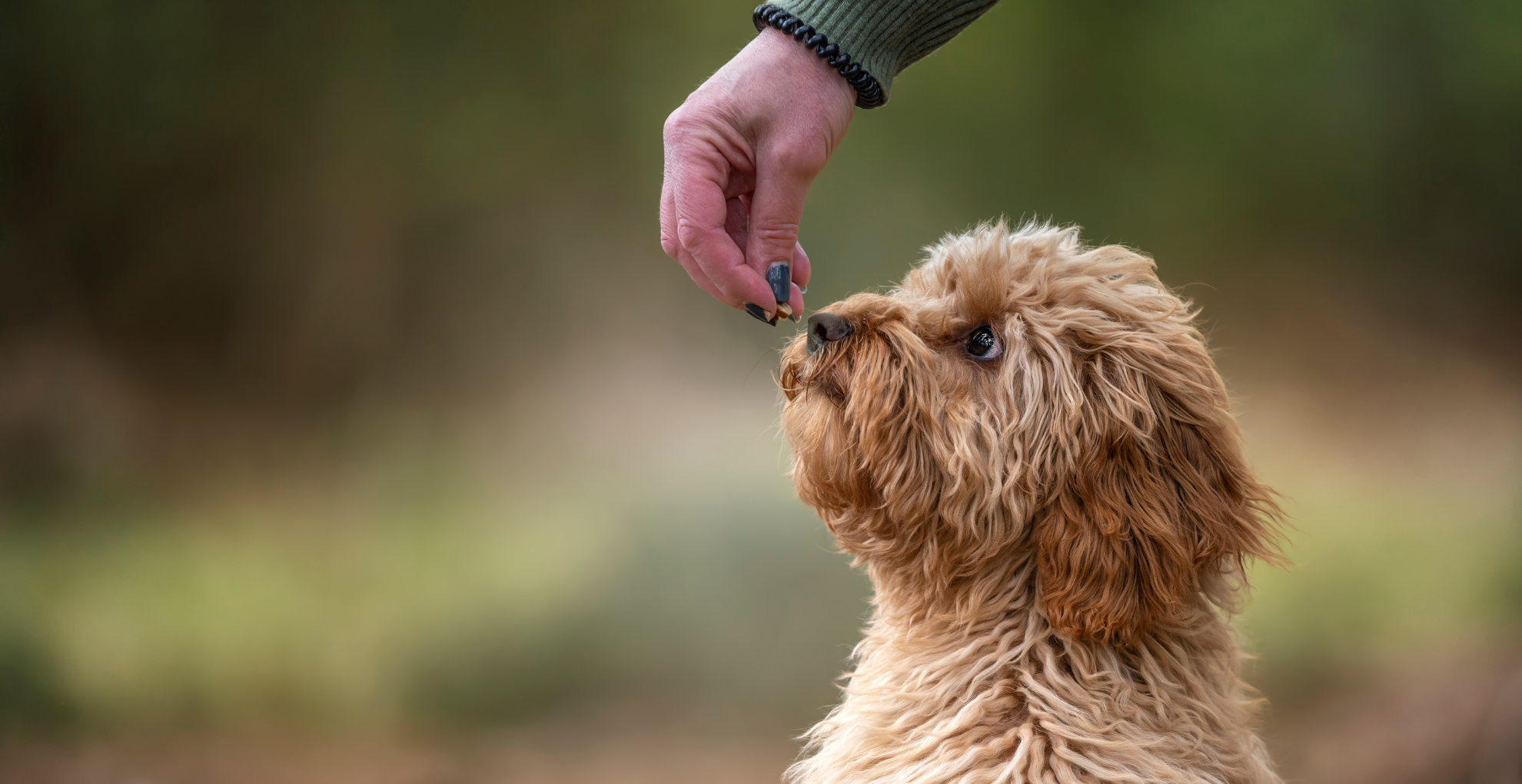
Do dogs eat by smell or taste?
Dogs have a great sense of smell. They have been known to detect the scent of a Tennis ball in a football stadium.
Where humans might use eyes or speech to get more information, dogs use their nose to get an idea about the food and its composition.
Your pet smells in her food that which you cannot. Therefore, Azestfor has a flavor palatant added to stimulate your dog’s appetite – available in Chicken or Veggie flavor . Otherwise vitamins and minerals are bland.
Smell is the most important sense for a dog, so it’s not surprising that the smell of a food is key to its appeal.
Some owners add aromas to make their food more appetizing, but warm fresh foods are strong-smelling and attract pets to eat.
That’s why we advocate a homemade, fresh diet for your pet. The aromas while you make the food and when you prepare the meal will serve your dog well, because it will waft toward her and whet the appetite.
Just like a human who smells fresh bread or a sizzling steak, your dogs will be hungrier if they catch the smell of delicious homemade food.
Dogs prefer warm, moist foods over dry, cold ones.
This is thought to be a trait passed down from their hunting ancestors who had been eating fresh kills, or possibly their close relationship and food-sharing with humans since their domestication.
Warm foods release more chemical compounds into the air and give more aroma.
All the recipes that you can find from Azestfor are pre-balanced in terms of macro and micro nutrients.

When should I worry about my dog not eating?
When dealing with pets who have a lack or loss of appetite, it is important first to figure out the source of the problem.
One must determine whether the dog wants to eat but he cannot or if he is unwilling to eat. If the loss of appetite continues for more than 72 hours, it is advisable to visit your veterinarian.
Glucose and electrolytes perfusions may be necessary to correct any dehydration or electrolyte imbalance.
Loss of appetite is generally accompanied with other signs of illness like fever, drowsiness, diarrhea, etc.
Controlling pain and fever often restores pets’ appetites.
If your dog is abnormally turning up her nose at her bowl or hasn’t eaten for a whole day, that may mean that she is no more interested in that food.
Try to make her meal as appealing as possible. She should be tempted with many types of food and good smells. Preparing a homemade meal for a sick dog is an excellent way to show them that you care about them and want them to feel better. Be sure to tailor the recipe to your dog’s favorite smells and tastes, according to their preferences. Sometimes, a special treat that reminds them of good times is enough to get them to eat.
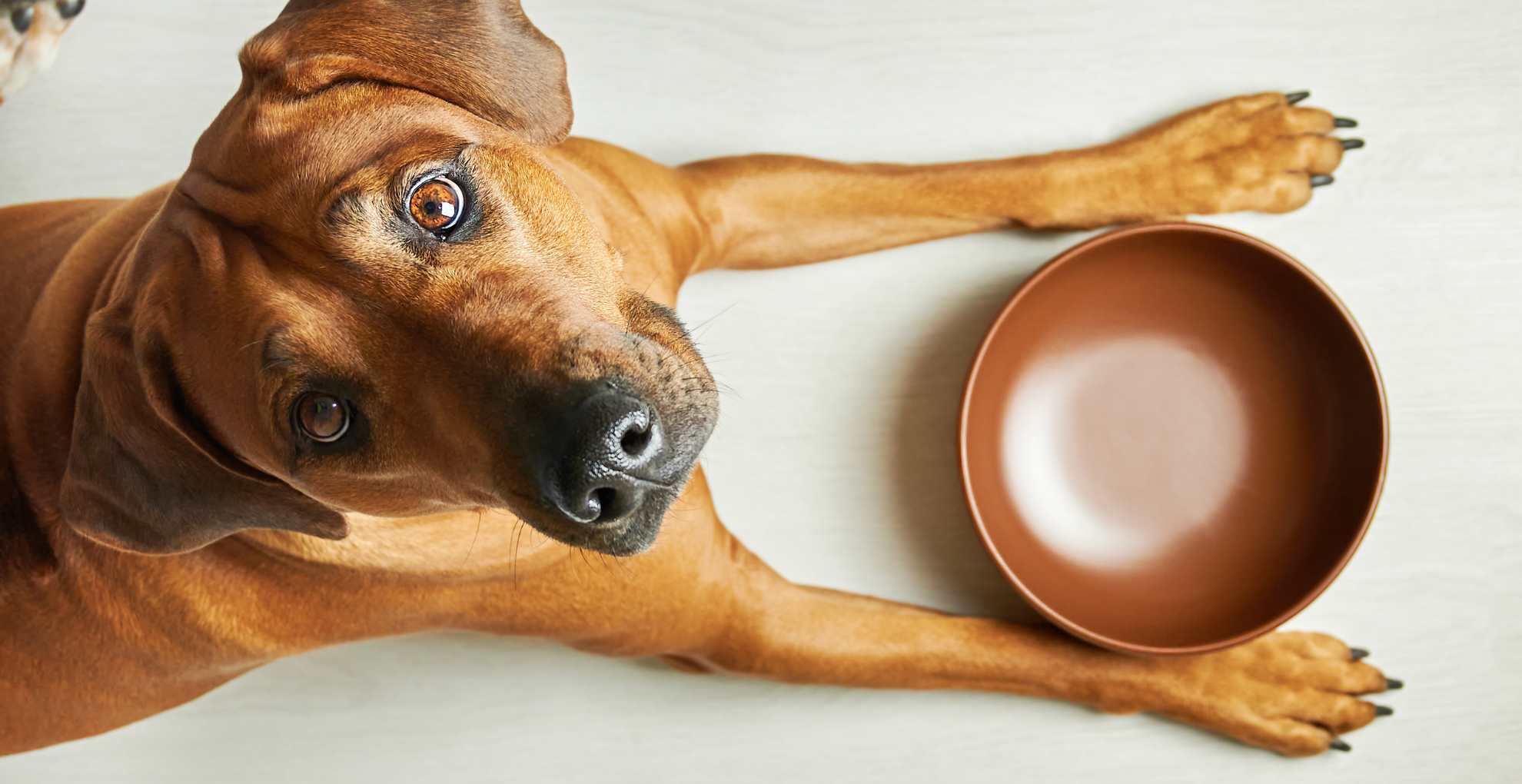
How long can a dog go without eating?
If your dog refuses to eat for 3 days or more, it is urgent to take him to the vet to get re-hydrated or fed using gastric tubes.
Unlike wolves who can experience prolonged times of famine, dogs cannot remain healthy fasting for more than 2 or 3 days.
The main consequences of not eating are the disturbance of blood electrolytes level and gastrointestinal problems.
Hyporexia or lack of appetite, with minimal food intake, is less dangerous.
Many studies on the restriction of food intake have shown that dogs fed with 25% less than normal dogs eat have longer lifespan ( + 2 years ), develop less body fat, and are less likely to have bone and joint problems.
Talk to your vet about restricting calories before your undertake any diet program for your pet.
It is completely normal for pregnant bitches to experience a temporary loss of appetite around three weeks of gestation, due to doggie morning sickness. This may last a few days and is not a health concern, as long as she returns to eating normally afterwards.
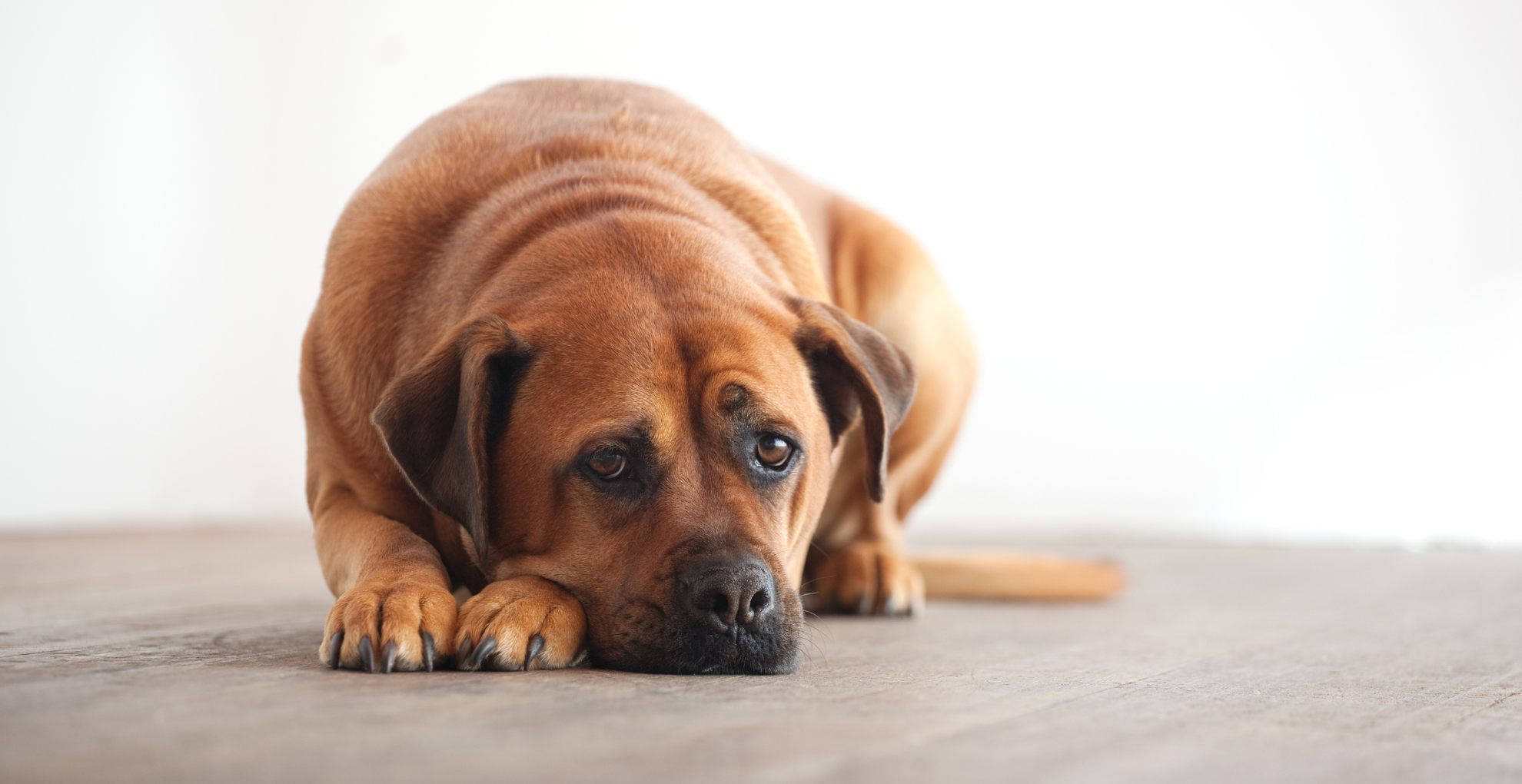
Why Does My Dog Suddenly Not Want To Eat?
Causes of loss of appetite are various and complex. Many external and internal factors are involved in regulating the dog's appetite.
Internal factors are related to the dog’s willingness to eat, body condition, and health status.
External factors are related to the food and its preparation.
Let’s take a look at some of the factors that may impact your pets’ appetites.
Internal factors:
- Gastric Distention
When the stomach is dilated, either after a meal or in some abnormal condition, this makes the dog unwilling to eat. When the stomach is empty, a hormone called ghrelin is secreted, which plays a role in stimulating the appetite. Watch out if your dog is stealing or sneaking food. This may cause him to have a distended stomach and lose interest in food at meal times. - Diseases and Pain
Diseases that are associated with vomiting or nausea may cause dogs to develop food aversion. Some diseases result in a reduced sense of smell, and therefore a lack of appetite. Other disorders that can cause low appetite include low phosphorus intake and vitamin B1 deficiency (Read and Harrington, 1981). - Psychogenic (Mental Health)
Neurotransmitters in the body may inhibit appetite such as serotonin.
Stress and anxiety can also lead to anorexia. Emotional stress (e.g. loss of companion), is known to cause a temporary loss of appetite in dogs. - Drug Induced
Some medications can cause anorexia as a side effect. These drugs include but are not limited to analgesics, anti-inflammatories, diuretics, antibiotics, and chemotherapy (Delaney et al., 2006). Let your vet know when your dog refuses to eat after medication changes.
External factors:
- Meal Appeal
It’s not hard to believe that gross food would be a reason why a dog doesn't want to eat. This is why a fresh, whole-food diet is best for both people and animals.
Making your dog’s meals at home using Azestfor’s recipes will greatly increase the aromas, taste, and textures that your dog craves. If the dog doesn’t want to eat, try this change first. - Social environment
When multiple dogs are raised together and fed together, a dominance power play may happen.
Older and stronger dogs may attempt to eat more than others and plunder their food.
Fear of dominant dogs within a group can lead to decreasing food intake.

How often should a dog eat a day?
This is the first question all new pet owners ask. Dogs may have developed distinct feeding schedules as a consequence of their close relationship to humans.
There are two main regimens for feeding dogs.
Free-Choice
Many owners prefer to give their pets permanent access to food at all times.
The food bowl is cleaned and refilled daily, and the dog is free to eat at all times.
Pet owners rely upon dry foods for this type of feeding because of the processing and chemical treatment of making dried kibble therefore it is less likely to spoil than canned or fresh food.
Under this regime, pets tend to consume higher amounts of food than their body really needs and are therefore more prone to obesity and cardiovascular problems (1) Free-Choice feeding is not ideal for optimum dog health.
Time-Controlled (recommended)
This technique is more common.
Pets are given several meals at fixed times throughout the day.
How often should owners offer a meal?
The solution depends on the dog age and activities.
- Weaned dogs require at least three meals per day until they reach 4-6 months of age because their body is growing.
- After six months, two daily meals are recommended.
- Pregnancy increases the energetic needs of a dog slightly, but avoid over-feeding. For lactating dogs the energetic needs are highest. Many small meals per day are recommended.
Water
Water should be always provided for your pet, unless your veterinarian has advised otherwise. The water bowl must be always filled and cleaned on a daily basis.Water consumption should be monitored, as it may reflect the health status of your pet. Healthy dogs drink approximately one ounce of water per pound of weight each day.
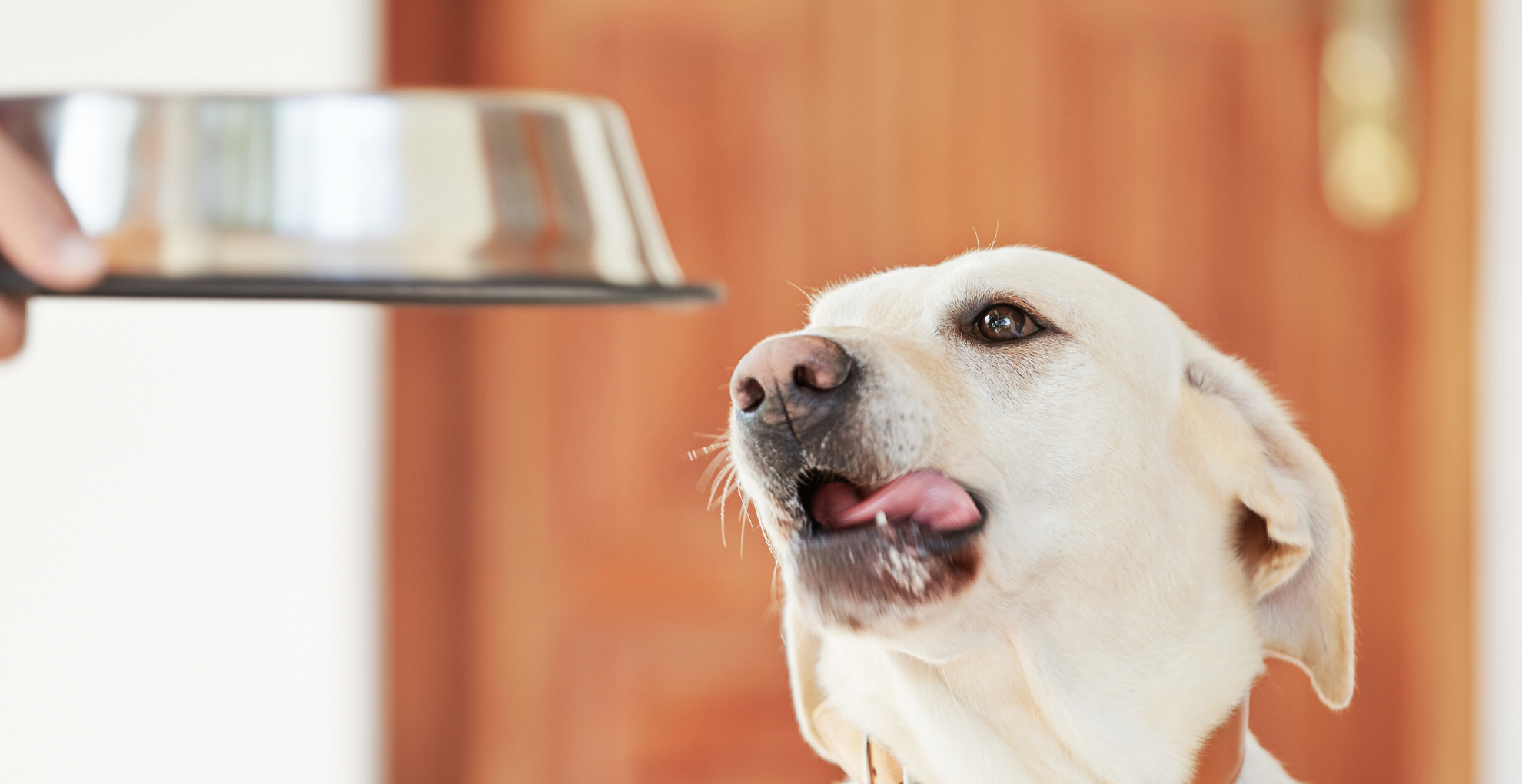
What is the best kind of food for my dog?
Many owners are concerned about how to make their dog’s food better for them.
Your choices impact their health, so consider them carefully.
Homemade dog food provides unsurpassed nutrition. The fresh whole food ingredients are readily bio-available. Free of preservatives and fillers. We have created a resource to help dog owners find and make great homemade dog food recipes for their canine companions.
Why does my dog not like kibble?
A diet heavy in kibble and processed food is convenient, but it isn’t always best. For example, some kibbles contain high levels of salt that can contribute to kidney problems. In addition, dogs may dislike the texture of a dry diet and eat less than they should.
Canned wet food is an alternative, but it is also not the highest quality choice. Some dogs may experience stomach discomfort if they eat canned food heavy with preservatives, and just like humans, dogs are not at their healthiest eating processed foods.
Can I switch my dogs food cold turkey?
No. Switching to a new food must not be abrupt. A sudden change in diet may cause gastrointestinal upset. When introducing a new food to your pet, you should do so gradually. If you want to make healthier choices for your pet and decide that fresh, homemade meals are the best for your dog, you should move forward with transitioning your dogs food to the new diet in a slow and deliberate fashion (see info graphic above).
How many calories does my dog need?
Normal dogs adjust their food consumption according to their energy requirements.
The food should provide all of the essential nutrients in adequate amounts and must supply sufficient energy to maintain ideal body weight and optimal growth. If you're unsure about what that means, try one of our recipes. They're nutritionally balanced.
Studies to estimate the amount of food the pet needs have led to a formula to estimate energetic needs. If you love math, you can do this yourself.
In order to calculate the basic needs of a dog in kilocalories (Kcal), it is important first to know the resting energy requirement (known as RER). This is the energy required for a normal adult dog to perform the basic functions of life in 24 hours.
Please note that active dogs or dogs with special circumstances will need more than this formula indicates.
Resting Energy requirement (RER) = 70 x (Body Weight)0.75
Energy requirements (ER) vary from one dog to another. The table below summarizes energy requirement for several categories of dogs:
Category
Energy requirements (ER)
Adult dogs
ER = RER: Adult dogs (non-neutred)
ER = RER x 0.8: Golden retriever and Labrador breeds
ER = RER x 0.8: Sedentary lifestyle or neutered dogs
Growing puppies
ER = 2 x RER: Young dogs after weaning
ER = 1.5 x RER recommended in 8 month old puppies
ER= 1.2 x RER recommended in 1 year old puppies
Reproduction and Lactation
ER = 1.1 x RER: First two thirds of gestation
ER = 1.5 x RER: During the last trimester
ER = 3 x RER: During lactation
Working dogs
ER = 1.2 x RER: Racing Greyhounds
The next step is to determine the exact amount of food in each meal. It is necessary to read the energy density of that food according to its manufacturer. If you are using the preferred homemade method, you should calculate how many Kilocalories in 100 grams of that food.
Let’s take an example of Bailey, a 22lb (10kg) neutered adult dog. This calculation uses the metric system, so divide your pet’s weight in pounds by 2.2 to get the weight in kilograms. ER for this category is RER x 0.8. First calculate the RER for Bailey:
RER = 70(10kg)3/4 ≈ 400 Calories/day
Now take into account her category:
400kcal x 0.8 = 320 Calories/day
Let’s suppose that your recipe has an energetic density of 350 Kcal per 100g. If you use the preferred two-meals per day feeding method, Bailey needs two meals of 175g each.
If you aren’t interested in whipping out your calculator, there are several websites that offer RER calculations.
Try our calculator below:
Use the recipes from Azestfor to make meals that are already balanced, and adapt them to your dog’s needs or preferences.
You should always supplement your homemade meals with vitamins and minerals, which will improve the overall impact of the nutrition.
The vitamins offered by Azestfor fill the gaps in any homemade meals, and allow your dog the best chance to benefit from their food.
References:
- Case. L. P.. Daristotle. L.. Hayek. M. G. & Raasch. M. F.Canine and feline nutrition: a resource for companion animal professionals. (Elsevier Health Sciences. 2010).
- Bosch. G.. Hagen-Plantinga. E. A. & Hendriks. W. H. Dietary nutrient profiles of wild wolves: insights for optimal dog nutrition?Br. J. Nutr.113.S40–S54 (2015).
- Lawler. D. F.et al.Dietary nutrient profiles of wild wolves: insights for optimal dog nutrition?Br. J. .J. Am. Vet. Med. Assoc.226.225–231 (2005).
- Kealy. R. D.et al.Evaluation of the effect of limited food consumption on radiographic evidence of osteoarthritis in dogs.J. Am. Vet. Med. Assoc.217.1678–1680 (2000).
- Delaney. S. J. Management of anorexia in dogs and cats.Vet. Clin. North Am. Small Anim. Pract.36.1243–9. vi (2006).
- Okamoto. Y.. Ohtani. N.. Uchiyama. H. & Ohta. M. The feeding behavior of dogs correlates with their responses to commands.J. Vet. Med. Sci.71.1617–21 (2009).
- Zollers. B.. Wofford. J. A.. Heinen. E.. Huebner. M. & Rhodes. L. A Prospective. Randomized. Masked. Placebo‐Controlled Clinical Study of Capromorelin in Dogs with Reduced Appetite.J. Vet. Intern. Med.30.1851–1857 (2016).
- Streiff. E. L.et al.A comparison of the nutritional adequacy of home-prepared and commercial diets for dogs.J. Nutr.132.1698S–1700S (2002).


